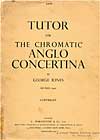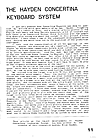Instruction for concertinas
Directory
Resources in the Concertina Library for concertina instruction.
Maccann Duet Concertina
-
 How to Play Chords on Any Maccann Duet Concertina
How to Play Chords on Any Maccann Duet Concertina
-
by Robert Gaskins
-
Explains how to play chords to accompany songs on Maccann Duet
concertinas of any size and from any period. Intended for beginners,
assumes no knowledge of musical notation or theory.
Includes a chord chart suitable for the lid of a concertina case. 51 pages.
-
Posted 15 February 2001
-
» read full article in pdf
-
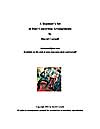 A Beginner's Set of Duet Concertina Arrangements
A Beginner's Set of Duet Concertina Arrangements
- by David Cornell
-
Six arrangements all in the key of C and progressing from easy to more
difficult, with detailed comments on fingering and technique and a
diagram of left hand bass pattersns. Includes: On Top of Old Smokey (two versions), Oh Susanna,
The Battle Hymn of the Republic, Sweet Sixteen, and Scotland the Brave.
18 pages.
- Posted 27 December 2001
-
» read full arrangements in pdf
-
 New Method of Instructions for the New Chromatic Duet English Concertina ... &c.
New Method of Instructions for the New Chromatic Duet English Concertina ... &c.
-
by John Hill Maccann
-
Maccann’s own tutor, first
published 1885 by Lachenal. Cover reads in part: "New Method
of Instructions for the New Chromatic Duet English Concertina,
with separate diagrams of keyboards and full instructions of
proper fingering, so arranged that without a knowledge of music
the instrument can be easily mastered ... Suitable for the 39,
47, or 56 Keyed Instrument. By J. H. Maccann, (Professor of the
Duet English Concertina)." First edition, London: Lachenal & Co., 1885. 43 pages.
Trim size 10 inches by 13 inches.
Updated 01 July 2003: Fourth edition (date unknown),
the cover of which reads in part "Suitable for the 39,
46 or 55 Keyed Instrument." 4th Edition. 43 pages.
This copy was provided by Bradley Strauchen, Deputy Keeper of Musical Instruments
at the Horniman Museum.
-
Posted 15 February 2003; last updated 01 July 2003
-
» (1st ed.) read full document in pdf
-
» (4th ed.) read full document in pdf
-
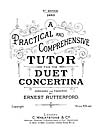 A Practical and Comprehensive Tutor for the Duet Concertina
A Practical and Comprehensive Tutor for the Duet Concertina
-
by Ernest Rutterford
-
The tutor for the Maccann Duet concertina which was published and sold
by Wheatstone over a very long period. It does not contain the name "Maccann,"
but refers only to the Wheatstone Duet.
(Wheatstone's Instructions for the Duet Concertina.) 4th ed.
London: undated (1930's?). From an original owned by Chris Algar. 56 pages.
-
Posted 15 November 2001
-
» read full article in pdf
-
 Maccann Duet Chords Tutor Manuscript
Maccann Duet Chords Tutor Manuscript
-
from Robert Gaskins
-
A polished 76-page manuscript “chords tutor” found in the
case of a matching 57-key Maccann Duet made by C. Jeffries Maker, 23 Praed St.
The instrument and the tutor are dated c. 1915. This may have been a “semi-bespoke”
tutor included with the instrument when it was originally sold.
Unlike the much later Jeffries System manuscript tutor (c. 1960) written with a biro
(ballpoint pen) in very rough style, this much-longer document was written with a split pen and
is very carefully finished.
-
Posted 15 February 2003
-
» read full document in pdf
-
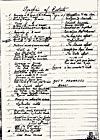 Stanley Manuscript Maccann Duet Tutor
Stanley Manuscript Maccann Duet Tutor
-
by Henry Stanley
-
One of a number of similar manuscript tutors for the Maccann Duet
Concertina written by Henry Stanley for his private pupils. Exercises,
scales, chords, tunes of graduated difficulty, tips on technique.
Hand written on music paper, 41 pages. This copy
belongs to Richard Evans.
-
Posted 15 May 2003
-
» read full document in pdf
-
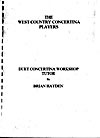 All-Systems Duet Workshop Tutor
All-Systems Duet Workshop Tutor
-
by Brian Hayden
-
Tutor for a workshop on how to play duet concertinas of all systems. Begins
with notation, fingering, and chords for Maccann Duets, Jeffries Duets, Crane (Triumph)
Duets, and Hayden Duets. Tunes of progressive difficulty, with increasing
number of notes and then in keys with increasing numbers of accidentals, all
written in notation based on the treble clef. Notes
on chord patterns and on strategies for melody and accompaniment applicable to
all systems of duet concertina.
Presented to The West Country Concertina Players, 1994. 20 pages.
-
Posted 15 August 2003
-
» read full document in pdf
-
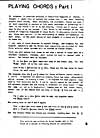 Playing Chords [for English, Anglo, and Maccann Duet]
Playing Chords [for English, Anglo, and Maccann Duet]
-
by Brian Hayden
-
"I would like to explain the system that I use when teaching
players about chords, their structure, and placement. Chords are
what I am most requested to explain at folk music workshops or
gatherings as I tend to use chords a lot in my own playing." (From
the introduction.)
Includes a novel notation for chords which is used elsewhere on this website.
As published in Concertina Magazine
(Australia) in three parts, 12-14 (1985), 12:5-7,
13:12-14, and 14:8-10; with corrections in 15-16 (1986), 15:14
and 16:1,6,9.
-
Posted 01 March 2004
-
» read full article in pdf
-
 Garland Films Presents: “Reuben Shaw—Duet Concertina Player”
Garland Films Presents: “Reuben Shaw—Duet Concertina Player”
- by Barry Callaghan
-
On 7 February 1987, Barry Callaghan of Garland Films with fieldworker Graham Coyne
filmed a lengthy interview and demonstration, in which Reuben Shaw talks about his life and music.
He discusses early performers, his difficulties in finding music to study, and plays
the Maccann Duet concertina
from some of his collection of Henry Stanley manuscript arrangements.
This film has been available from Garland Films on PAL VHS tapes for some time, but now the entire film
is available on this website and is available on DVD from Garland Films.
STATUS: Article is online now with still pictures, but
video clips are not yet available for streaming (in production now).
- Posted Coming soon
- » read full article
-
 Which Duet Concertina—Hayden or Maccann?
Which Duet Concertina—Hayden or Maccann?
-
by Robert Gaskins
-
A comparative review of two concertinas:
a Stagi Hayden Duet concertina (c. 2003),
and a Lachenal Maccann Duet concertina (c. 1900).
Each instrument has 46 keys, and each cost
£500 ($800) ready to play.
On almost every measure, the antique Lachenal Maccann Duet
turned out to be preferable to the modern Stagi Hayden Duet—by
a considerable margin. The advantages frequently mentioned as
belonging to the Hayden system (uniformity of fingering in all
key signatures, automatic transposition) turned out to be significantly
compromised by the restricted size of the Stagi. If you want to
play a duet concertina, at present you will probably do best to
buy a Maccann Duet.
-
Posted 01 March 2004
-
» read full article
English Concertina
-
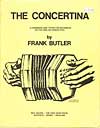 The Concertina: A Handbook and Tutor for Beginners on the English Concertina
The Concertina: A Handbook and Tutor for Beginners on the English Concertina
-
by Frank E. Butler
- The standard tutor for the English concertina during
the concertina revival in the 1970s. Based on classes offered at the Battersea
Institute under the auspices of the Inner London Education Authority. Introduction
to music, exercises, and elementary tunes.
Originally published by Neil Wayne at the Free Reed Press,
Duffield, Derby, England, in 1974. 64pp plus covers. The scan was made by
Wes Williams.
-
Posted 15 January 2005
-
» read full document in pdf
-
 Signor Alsepti and “Regondi’s Golden Exercise”
Signor Alsepti and “Regondi’s Golden Exercise”
-
by Allan Atlas
-
Discussion and explanation with new fingering of a celebrated excercise from James Alsepti's English tutor,
published by Lachenal c. 1895, with the explanation “The following exercise, which has never before been
published, was taught to Signor Alsepti by Regondi. It is
very difficult for all instruments, especially the Concertina, and to thoroughly master it with the correct
fingering &c. will enable the Pupil to play passages in all keys.”.
As published in
Concertina World 426 supplement (2003) pp. 1-8.
-
Posted 22 December 2003
-
» read full article
-
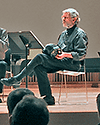 The Victorian Concertina: Some Issues Relating to Performance
The Victorian Concertina: Some Issues Relating to Performance
- by Allan W. Atlas
- Present-day players of the ‘English’ concertina must make a number
of important decisions when delving into and performing the large repertory of
art music that was written for the instrument in Victorian England. These
decisions become especially critical for those who would perform the music in a
manner that may at least approximate the way it may have sounded in the nineteenth
century.
Originally published in Nineteenth-Century Music Review, 3/2 (2006),
30 pages including photographs and musical examples.
Briefly, there are three basic decisions to be made. The first
two concern the choice of instrument: (1) modern instrument or period (Victorian)
instrument; and (2) if the latter, what kind of instrument in terms of reeds (type
of metal), tuning, structure of the bellows and number of buttons. The third
decision, on the other hand, has to do with a fundamental question of playing
technique: should we use three or four fingers of each hand?
- Posted 15 November 2007
- » read full article
Anglo Concertina
-
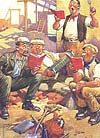 “Faking It”
“Faking It”
-
by Roger Digby
with a section on the Duet Concertina by Kurt Braun
-
Subtitled "A guide to selecting appropriate chords
on the Anglo and Duet Concertinas".
Explains how to play the concertina from a “fake book” or “busker’s book”,
which gives a melody line and an indication of the chords for accompaniment. 16pp.
Originally published for the ICA, 2004.
-
Posted 15 August 2005
-
» read full document
-
 “Faking It”: a dozen examples
“Faking It”: a dozen examples
-
by Roger Digby
-
Musical examples to accompany the web publication of “Faking It”.
Twelve tunes that are common in sessions and include most of the dance rhythms,
six tunes in C and six in G as the most common Anglo keys. Each tune is represented
by the music (printed without chords), and also by a sound file of Roger Digby
playing the Anglo concertina as you might hear at a casual session.
Originally presented at a workshop for the
East Anglian
Traditional Music Trust, 2004.
Tunes include: Blaydon Races, Dannish Waltz, Dorset Four Hand Reel,
Family Jig, Galopede, Greensleeves, Harry Cox’s Schottisch, Keel Row,
Shepton Mallet Hornpipe, The Man in the Moon, Three Around Three, and Winster Galop.
-
Posted 15 August 2005
-
» read full article
-
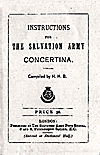 Instructions for the Salvation Army Concertina (1888)
Instructions for the Salvation Army Concertina (1888)
-
by Herbert H. Booth
-
The earliest known concertina tutor for the Salvation Army, compiled by Herbert H. Booth,
son of Salvation Army founder William Booth. This booklet is devoted exclusively to chording
on the Anglo concertina. The title’s phrase “Salvation Army concertina” refers to
an Ab/Eb concertina with 26 keys, the Salvation Army’s standard issue into the
twentieth century. The tutor provides I-IV-V chords (the “three chord trick”) for a number
of keys; the chords are shown as played with two hands without the melody,
presumably as an accompaniment for singing or for other instruments playing melody.
(Scan from Stephen Chambers, description by Randall C. Merris.)
London: Published by The Salvation Army Bookstores, 8 and 9, Paternoster Square, E.C., 1888.
Price 3d. 16pp. including covers.
-
Posted 15 April 2007
-
» read full document in pdf (or right-click to download)
-
 Howe’s Eclectic School for the Concertina (1879)
Howe’s Eclectic School for the Concertina (1879)
-
by Elias Howe, Jr.
-
Elias Howe (1820–1895) was a prolific nineteenth century publisher of sheet
music and tutors for a wide variety of popular instruments of his day. This book,
which is significantly lengthier than his “Western German Concertina School” tutor,
has a slightly more detailed introduction to playing the German concertina. This
introduction is written in both English and German, indicating that at least some
German-Americans were using the two row Anglo-German instrument. Like the “Western”
collection, it contains American popular and patriotic songs, dances, operatic and
Irish airs, hymns, and Civil War era melodies. Concertina tablature, in the form of
numbered buttons for an instrument keyed in C and G, is found throughout.
Boston: Published and Sold by Elias Howe, 88 Court Street, 1879.
In English and partly in German. 80pp. including covers.
-
Posted 15 April 2007
-
» read full document in pdf (or right-click to download)
-
 Howe’s Western German Concertina School (1879)
Howe’s Western German Concertina School (1879)
-
by Elias Howe, Jr.
-
Elias Howe (1820–1895) was a prolific nineteenth century American publisher of
sheet music and tutors for a wide variety of popular instruments. This book has
a brief introduction to the German concertina keyed in C and G, but focuses on a
collection of American popular and patriotic songs, dances, operatic and Irish airs,
hymns, and Civil War era melodies. The hymns are largely taken from the shape note
tradition. Concertina tablature in the form of numbered buttons is found throughout.
The settings are typically simple, unaccompanied melodies; Howe seems to have simply
taken melodies from his vast collection of American tunes and transcribed them to
concertina-friendly keys.
Boston: Published and Sold by Elias Howe, 88 Court Street, 1879.
48pp. including covers.
-
Posted 15 April 2007
-
» read full document in pdf (or right-click to download)
-
 Sedgwick’s Improved and Complete Instructions for the German Concertina (1893)
Sedgwick’s Improved and Complete Instructions for the German Concertina (1893)
-
by Alfred B. Sedgwick
-
Alfred Blair Sedgwick (1821–1878) was an early music hall concertinist;
born in England, he migrated to the US ca. 1850. He much preferred the English system
over that of the German concertina, as his introductory notes to this tutor make clear,
but bowed to the popular preference for the latter instrument and prepared a number of
tutors for it. This tutor, one of his later and more complete ones, contains a lengthy
introduction to musical notation, as well as instruction tailored to the German concertina
with a set of progressive exercises. The tunes which follow are generally more demanding
than those of Howe’s books, and have been thoughtfully adapted to the anglo. Many have
simple harmonies and a few are challenging, fully harmonic pieces requiring a full
two-handed chorded treatment (see, for example, “Dodworth’s Lancers”). The tutor also
contains some concertina duets. Concertina tablature, in the form of numbered buttons
for an instrument keyed in C and G, is found throughout.
Boston: Published by Oliver Ditson & Co., 277 Washington Street, 1893.
80pp. plus covers and 1-page unnumbered insert. “Preliminary Remarks” dated from
“Brooklyn, L.I., January, 1865.”
-
Posted 15 April 2007
-
» read full document in pdf (or right-click to download)
-
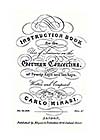 Earliest Known English-Language German Concertina Tutor: Minasi’s “Instruction Book” 1846
Earliest Known English-Language German Concertina Tutor: Minasi’s “Instruction Book” 1846
- by Randall C. Merris and Dan Worrall
-
Carlo Minasi published the earliest known English-language tutor for the German ("Anglo-German") concertina
by 1846 in London.
This publication goes well beyond the basics; in it are instructions not only
for the simple “along the row” melody line style, but also extensive discussions of octave
playing, cross row fingering, and chord accompaniment.
Numerous fully arranged musical selections are included,
almost all in the “English” or “harmonic” style, where chords are played on the
left and melody on the right, more or less as a duet concertina is played.
- Posted 15 August 2005
- » read full article
Other Duet Systems
-
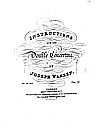 Instructions for the Double Concertina
Instructions for the Double Concertina
-
by Joseph Warren (C. Wheatstone & Co.)
-
A complete tutor for the Double duet, with an introduction devoted to the theory
of the keyboard arrangement and the leveraging of patterns among key signatures.
Published by Wheatstone & Co., deposited at the British Museum
28 July 1855. 27 pages. Printed in large format, trim size 9.5 inches by 14 inches.
-
Posted 15 February 2003
-
» read full document in pdf
-
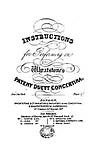 Instructions for Performing on Wheatstone's Patent Duett Concertina
Instructions for Performing on Wheatstone's Patent Duett Concertina
-
by Anonymous (C. Wheatstone & Co.)
-
From page 2: "Many persons having formed opinions very prejudicial
to the Concertina, in consequence of mistaking for the original, an
imitation called the German Concertina, the public is informed
that, the so called instrument is totally different (with the exception
of the exterior) ... ."
Published by Wheatstone & Co., deposited at the
British Museum 28 July 1855. 21 pages. Trim size 6.5 inches by 10 inches.
-
Posted 15 February 2003
-
» read full document in pdf
-
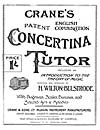 Crane's Patent English Combination Concertina Tutor
Crane's Patent English Combination Concertina Tutor
-
by H. Wilston-Bulstrode
-
The earliest tutor for Crane-system duets, published for
Crane's of Liverpool. Contains key diagrams for
instruments from 35 keys to 55 keys, theory, exercises, and
a number of tunes.
Published by Lachenal & Co., c. 1896. 54 pages.
From the introduction: “Crane's Patent English Combination
Concertina has already won for itself a name among the best-known
masters of the instrument. Its capacity of execution, sweetness of
tone and adaptability for Harmonic combinations, taken with the
striking ease with which it may be learnt, even by the least
gifted musicians, must in due time cause it to be generally
regarded as the leading Concertina in the market, a position
which Messrs Crane & Sons Ltd. unhesitatingly claim for it.”
-
Posted 15 February 2003
-
» read full document in pdf
-
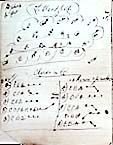 Jeffries Manuscript “Tutor” for Jeffries System Duet
Jeffries Manuscript “Tutor” for Jeffries System Duet
-
by Anonymous (Jeffries Bros.?)
-
Undated manuscript (possibly as late as 1959) showing fingering and chords
for a Jeffries System Duet, apparently made by the Jeffries company. The
document is fashioned from a notebook with pages cut so that the keyboard diagrams can
remain static at the top while partial pages of chords and instructions for various
keys can be turned below. Unlike the early Jeffries Maccann manuscript tutor
(c. 1910) written with a split pen and very finished, this document is written with a biro
(ballpoint pen) indicating a much later date, and is very rough.
Manuscript now in the collection of the Horniman Museum, London (Item CM C1080).
The notebook is at present contained in an envelope along with a letter from
Thomas Jeffries dated 1959 which may or may not be related.
-
Posted 15 February 2003
-
» read full document in pdf
-
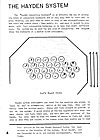 The Hayden System
The Hayden System
-
by Brian Hayden
-
Hayden's early (1983) account of the advantages of the Hayden system,
stressing the ease of forming chords in any key and of transposing.
As published in Concertina Magazine
(Australia) 8 (Autumn, 1984): 4-8.
-
Posted 15 February 2003
-
» read full article in pdf
-
 Fingering Charts for Concertinas
Fingering Charts for Concertinas
-
by Wes Williams
-
Keyboard diagrams for the most important concertina
fingering systems: English, Anglo, and Maccann Duet, plus Early Wheatstone Double Duet,
Early Wheatstone "Duett" Duet, Crane (or Triumph) Duet, Jeffries System Duet,
Late Wheatstone Chidley Duet, and Hayden (or Wicki) Duet.
-
Posted 07 March 2005
-
» read full article
Do you know another resource that we should include?
Tell us about it.
Reprinted from the Concertina Library
http://www.concertina.com
© Copyright 2000– by Robert Gaskins
|
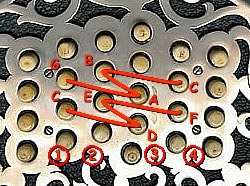
The basic Maccann System scale
pattern (fingers 1–3–2–4
spreads the work over each hand
like two English concertinas
|














